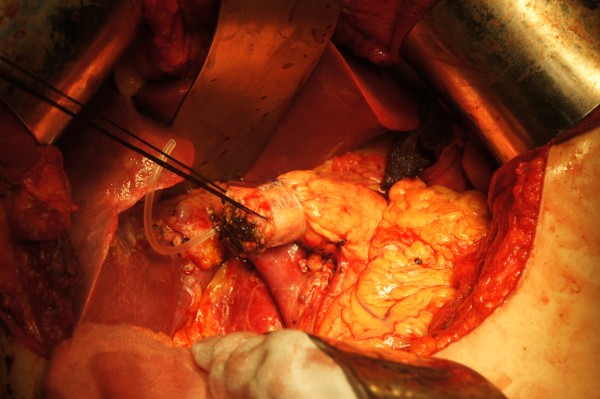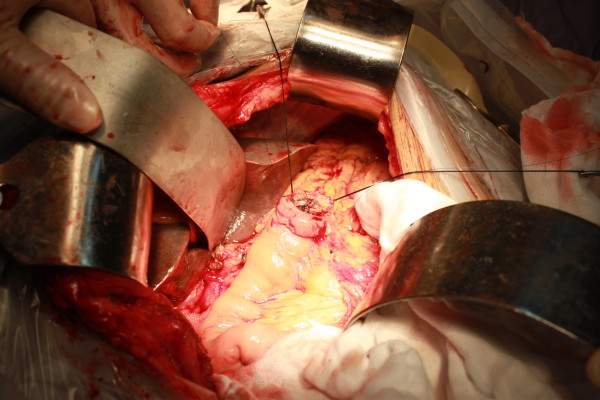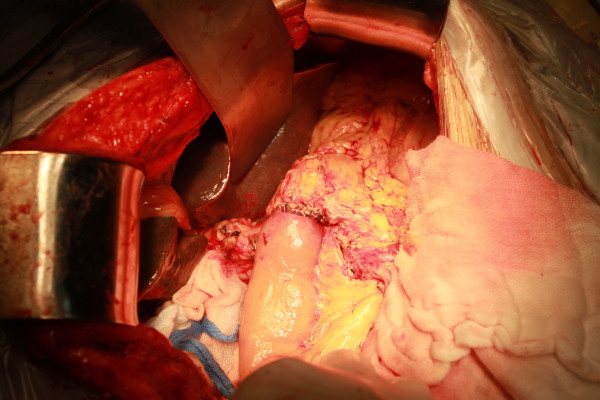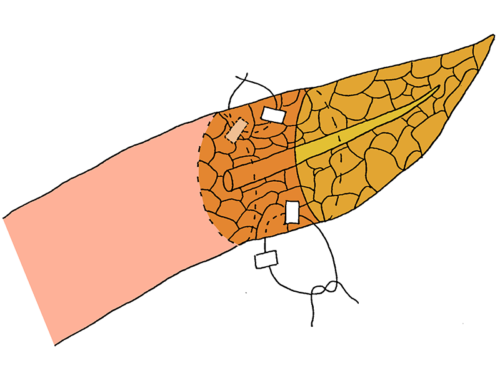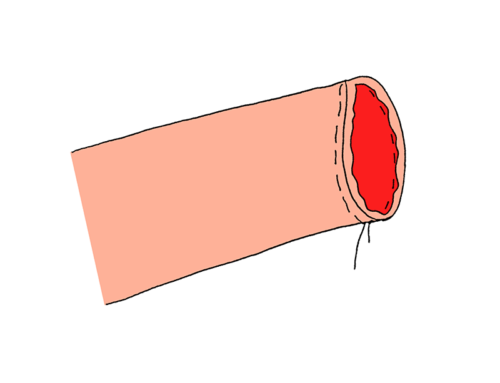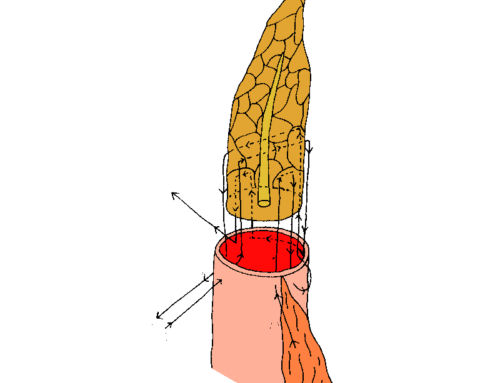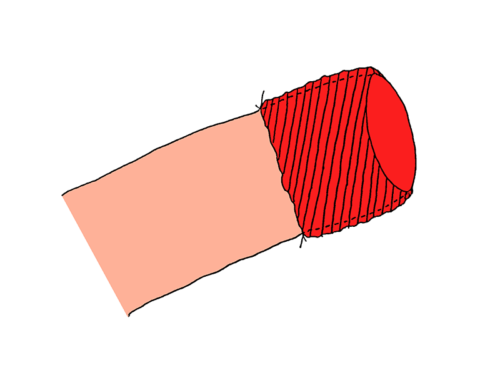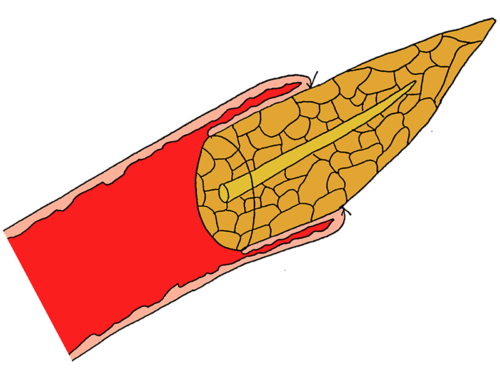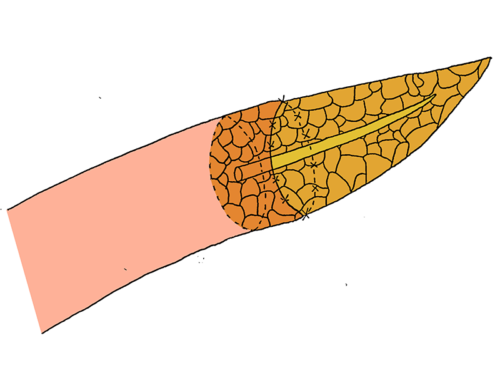The edge of the stump is tightly wrapped around using an absorbable or non-absorbable mesh with a width of 1.0-1.5 cm and a length that matches the circumferential length of the pancreas. The mesh is placed about 1.0 cm from the cut margin of the pancreas and can be fixed onto the pancreatic capsule with a few stitches.
One-layered mesh-reinforced invagination end-to-end pancreatojejunostomy
- The edge of the stump is tightly wrapped around using an absorbable or non-absorbable mesh with a width of 1.0-1.5 cm and a length that matches the circumferential length of the pancreas.
- The mesh is placed about 1.0 cm from the cut margin of the pancreas and can be fixed onto the pancreatic capsule with a few stitches.
- The cut ends of the mesh are sutured together.
- The posterior margin of the jejunum is sutured to the left edge of the mesh, i.e. the edge of the mesh most closely to the pancreatic tail, on the posterior side of the pancreas. The stitches pass through the full-thickness of the jejunum, the mesh and the pancreatic capsule.
- After completing the posterior sutures, the pancreas is invaginated into the jejunum for about 2 cm.
- The anterior margin of the jejunum is also fixed to the left edge of the mesh on the anterior side of the pancreas, so that the mesh is completely surrounded by the jejunal loop.
- Wang X, Zhou W, Xin Y, Huang D, Mou Y, Cai X. A new technique of polypropylene mesh-reinforced pancreaticojejunostomy. Am J Surg. 2007;194:413-415.
- Wang X, Xin Y, Pan J, Zhang N, Zhou W. A new feasible technique of mesh-reinforced pancreatojejunostomy and pancreatogastrostomy: retrospective analysis of 61 cases. World J Surg Oncol. 2012;10:114.



